Optimizing fruit composition in vineyard and orchards is crucial for enhancing fruit quality and the expansion of British Columbia (BC) fruit crops in the national and international markets.
The Castellarin laboratory investigates the ripening processes in grapes and blueberries, including the biological mechanisms that determine fruit and wine quality.
A major focus of the laboratory is to examine how grape composition evolves in the vineyard under different environmental conditions and how grape and wine quality can be improved through viticultural practices. This research aims to promote the development new practices to increase grape and wine quality in BC vineyards.
The major projects that the lab is currently running are:

Identification of the molecular and hormonal signals that trigger ripening in grapes
The physiological events and the genes that trigger the ripening process remain largely unknown. This study aims to deeply characterize the molecular and physiological changes associated to the onset of ripening through large scale metabolite and gene expression (RNA-sequencing) analyses. The project has been supported by Mission Hill Estate Winery, which provided the fruit for the analyses, and Genome BC. In a medium-long term, understanding the control of ripening will help developing new vineyard practices to modulate (accelerate or decelerate) ripening in the vineyard. Click here for more information on our results.
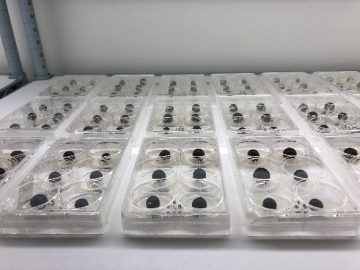
Impact of jasmonates concentrations on terpene biosynthesis in grape berries
Recent work from our lab has revealed that jasmonates (jasmonic acid, methyl jasmonate) are the hormones predominately responsible for controlling bound and free terpene concentrations in grape. Some studies have confirmed this, while others have observed inconsistent results. Additionally, high concentrations of jasmonates can delay berry ripening, compromising other aspects of quality. In this study, the berries of multiple wine grape cultivars were subjected to a concentration gradient of jasmonates in a in vitro berry culture system. We hope to understand at which concentrations jasmonates are most effective at increasing terpene concentrations without inhibiting sugar and anthocyanin accumulation.
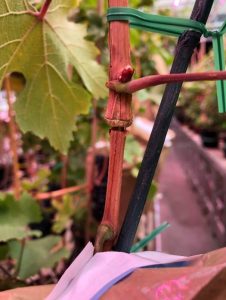
Light- and berry sugar-dependent nature of the grape volatome
Aroma compounds in grapes have been shown to be strongly modulated by environmental conditions, such as light, temperature, and vine water status. Likewise, the ripeness level of berries is understood to influence aroma production. In this project, both white and red wine grape cultivars were subjected to treatments that halt light exposure to fruit and sugar accumulation in berries mid-ripening to quantify the dependence of both factors on the development of individual terpene, norisoprenoid, alcohol, and ester compounds.
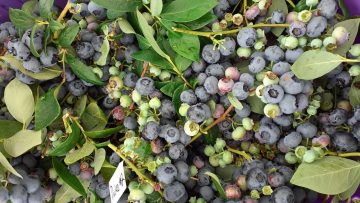
Assessing harvest and postharvest fruit quality in blueberries
Fruit quality is considered a central trait in blueberries since it drives the consumer appreciation and purchasing interest, and provides opportunities for packers and marketers to command premium price points. Postharvest storage conditions and transit to domestic and overseas markets affects the blueberry quality and determines blueberry shelf life. Thus, improving fruit quality at harvest and postharvest is a priority for the blueberry breeders and growers of the British Columbia Blueberry Council (BCBC), our industry partner.
This project aims to tackle this priority through the analysis of fruit quality parameters in commercial and new blueberry selections at harvest and during postharvest storage. The quality parameters considered include physical (e.g., weight, size, color, texture), chemical (e.g., soluble sugars, organic acids), organoleptic (e.g., volatile organic compounds), and health-related (e.g., phenolic compounds) properties of the fruit. Optimized and validated analytical methodologies will be developed to assess the blueberry quality of new selections produced by the BCBC breeding program and compare it to the one of commercial varieties.
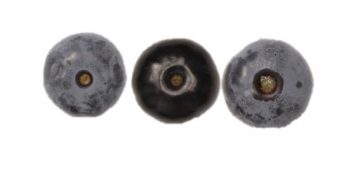
Role of cuticular waxes on transpirational water loss in blueberries
Blueberries are becoming increasingly popular around the world in recent years and British Columbia (BC) is one of the top producers worldwide. After being harvested, it normally takes several weeks for blueberries to enter local and international markets, during these weeks the fruit quality may decay. In fresh fruits, water loss is one of the major concerns for the preservation of fruit quality. The cuticular waxes protect fruits from water loss. This collaboration with the BC Blueberry Council aims to understand the relationship between cuticular wax composition and transpirational water loss in different blueberry varieties.
 Identification of the cis-regulatory code for transcriptional regulation in grapevine
Identification of the cis-regulatory code for transcriptional regulation in grapevine
Through a transcriptomic and bioinformatics approach we aim to identify major molecular regulators of fruit ripening and composition in grapevine. Transcription factors have a role in transcriptional reprogramming through their interactions with cis-regulatory elements (CREs). Additionally, there are CREs which are enriched within specific biological pathways. Therefore, by building CRE driven gene co-expression networks we gain insight into the grapevine cis-regulatory code. A few of our results are seen here.
Impact of berry size on skin metabolism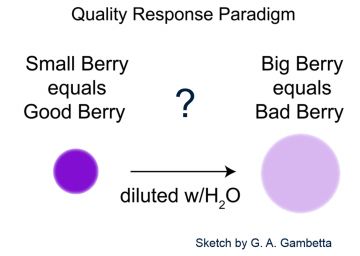
Winemakers prefer smaller berries since key metabolites for wine quality are synthesised in the skin: a smaller berry has a higher skin content that results in an higher concentration of these metabolites in the wines. However, the size could directly affect the synthesis of these metabolites in the skin. We are evaluating the impact of berry size on the skin metabolism (gene expression and metabolite analyses) in order to determine how and to what extent berry size affects the compounds being synthesised in the berry. More information regarding this project can be found here.
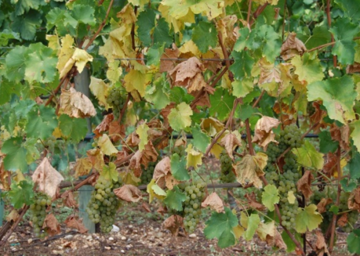 Impact of deficit irrigation on fruit and wine aroma and quality
Impact of deficit irrigation on fruit and wine aroma and quality
Our studies have shown that major metabolites that determine red wine quality (tannins and anthocyanins) are increased under water deficit conditions. Deficit irrigation strategies are often used to increase grape and wine quality in red grape varieties. Very limited information is available on the response of white grapes to water deficit. We collaborate with wineries in the Okanagan Valley (BC) to evaluate the impact of different irrigation strategies on the aromatic profile of white grapes and wines. For more information regarding this topic, click here.
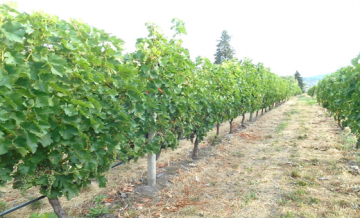 Impact of crop size on fruit and wine aroma and quality
Impact of crop size on fruit and wine aroma and quality
Adjusting the crop load in the vineyard is a very common strategy to sustain or improve fruit and wine quality. No information is available on the effect of these strategies on the grape and wine aromas. The focus of our collaborative research with the BC Wine and Grape Council is to evaluate how crop size levels in the vineyard affect the production of aromatics in white grapes.
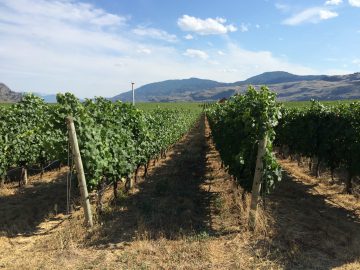 Impact of canopy management (early leaf removal) on fruit and wine quality
Impact of canopy management (early leaf removal) on fruit and wine quality
Leaf removal before blooming is a strategy proposed to reduce cluster compactness and bunch rots, but this strategy might also stimulate ripening and improve fruit and wine quality. A field study was carried out in a Merlot vineyard. Our data indicate that this strategy is helpful to reduce bunch rots at harvest, but minor effects are noticed on the fruit composition. Sensory analysis on the wines obtained from the different treatments also indicates minor effect of early leaf removal on wine features. For more information, click here.
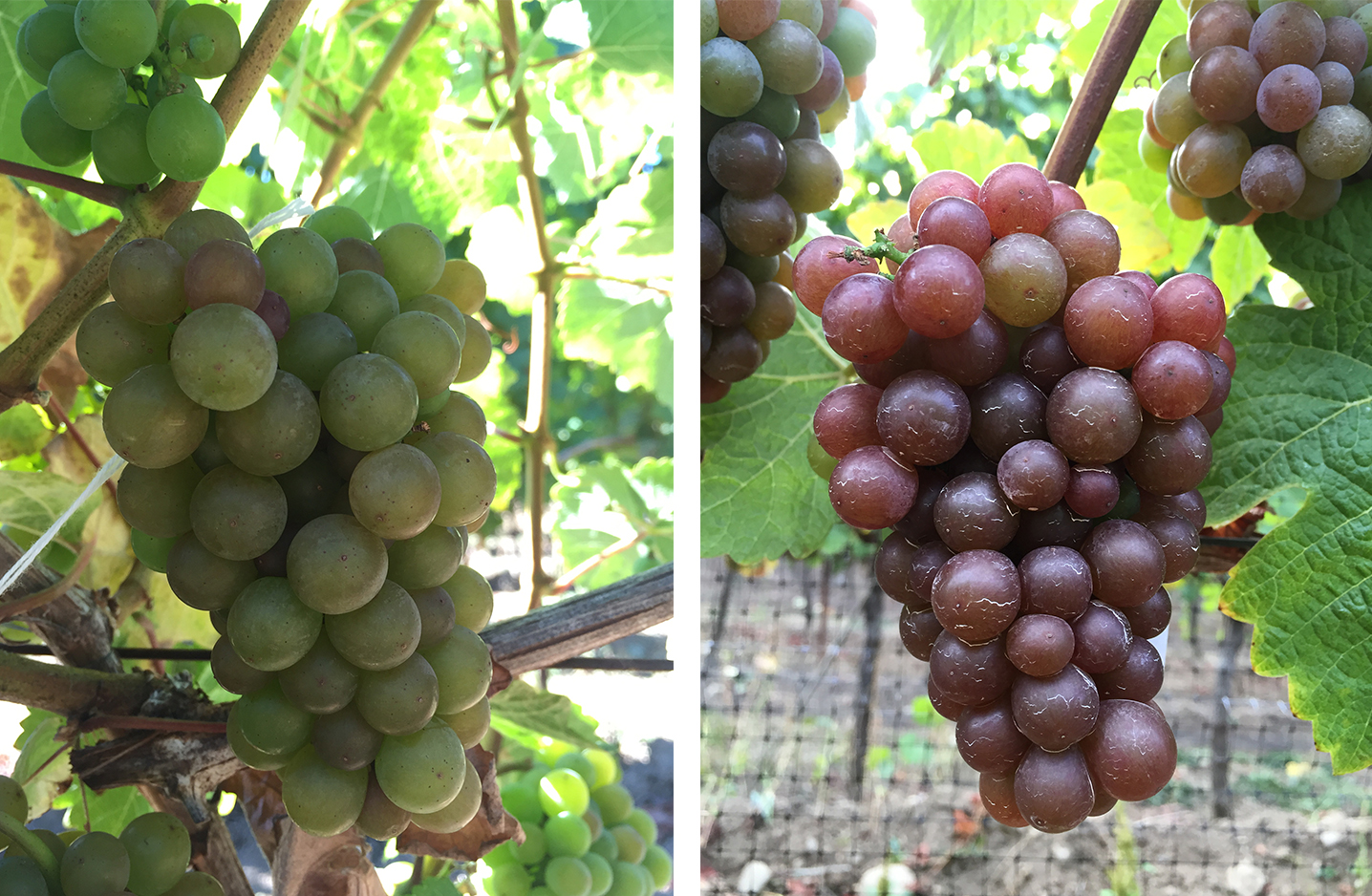 Impact of hormone applications on berry ripening and fruit and wine aroma
Impact of hormone applications on berry ripening and fruit and wine aroma
Hormone application may be used as a strategy to modulate berry composition and adjust harvest date by advancing or delaying ripening. Moreover, hormone applications affect grape and wine secondary metabolites. Our collaborative research with the Wine Islands Growers Association (WIGA) aims to discover the role of plant hormones on the regulation of berry ripening and the production of aromatics in white grapes.
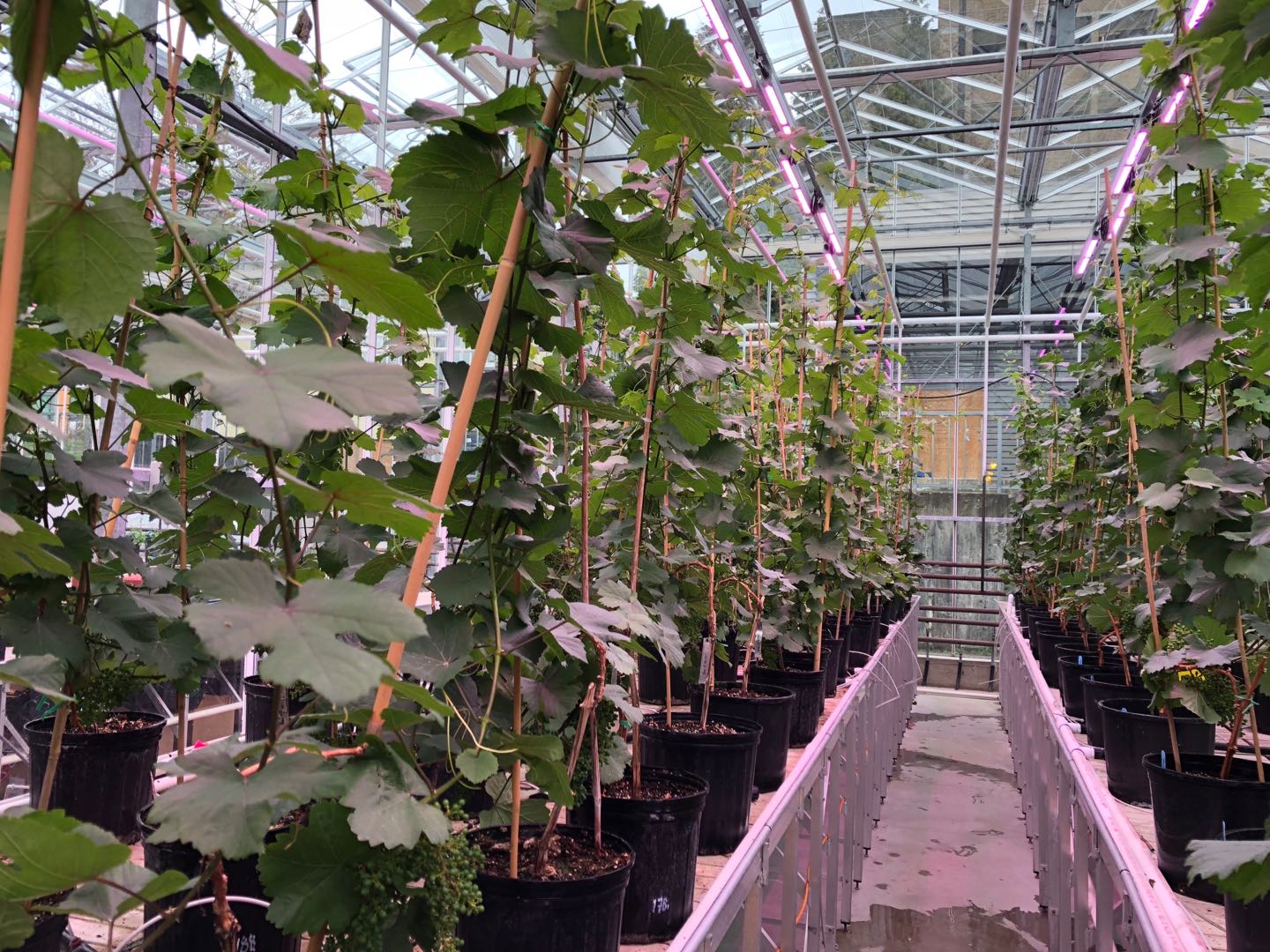 Impact of different temperature regimes on secondary metabolites in ripening grape berry
Impact of different temperature regimes on secondary metabolites in ripening grape berry
Environmental conditions during fruit ripening, such as air temperature, have substantial impacts on grape and wine quality. Specifically, secondary metabolites accumulated during ripening are very sensitive to temperature fluctuation. Worldwide climate change and temperature elevation has been predicted by IPCC (2014) and will greatly affect grape and wine production. We perform temperature-controlled experiment in growth chambers to investigate the relationship between temperature change and secondary metabolite accumulation, focusing on major phenolics and volatile organic compounds.
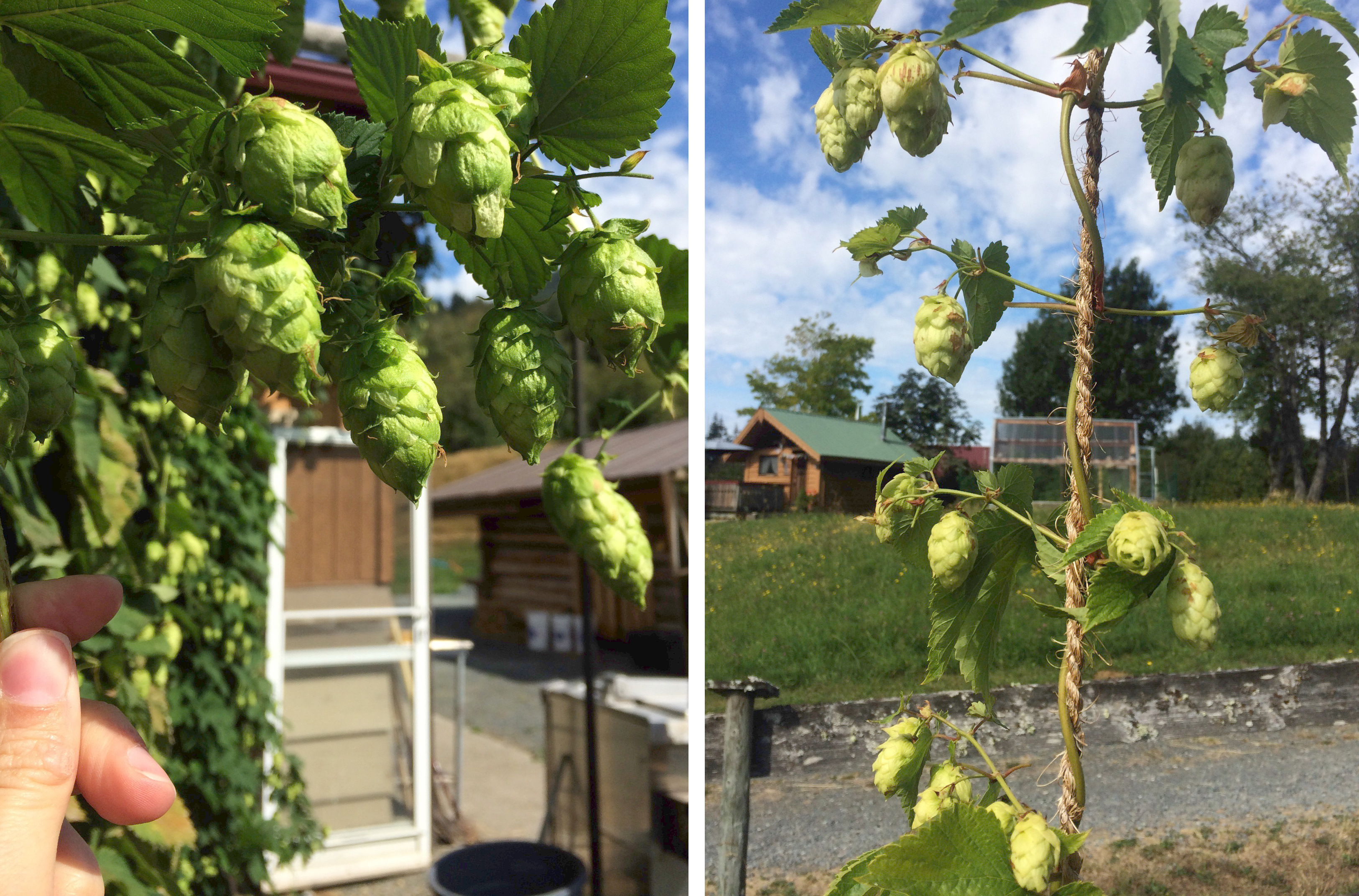 Regulation of Specialized Metabolite Accumulation in Humulus lupulus
Regulation of Specialized Metabolite Accumulation in Humulus lupulus
This project aims to identify the genetic and environmental factors that impact the accumulation of secondary metabolites in hops. Bitter acids and terpenes are important metabolites that contribute to the flavour and aroma of beers. Theses compounds accumulate in the glandular trichomes of Humulus lupulus female flowers. Abiotic stress such as water deficit has been reported by our group to stimulate the phenylpropanoid and terpenoid pathways in grapes. To evaluate how water deficit can impact bitter acids and terpene accumulation in Humulus lupulus we are conducting a controlled greenhouse experiment using the ‘aromatic’ hop varieties Santiam and Cascade. Comparative transcriptomics and metabolomics approaches are being employed to evaluate the stress effect on the biosynthesis pathways and metabolite accumulation profiles of these important flavor and aroma compounds to the beer brewing industry.